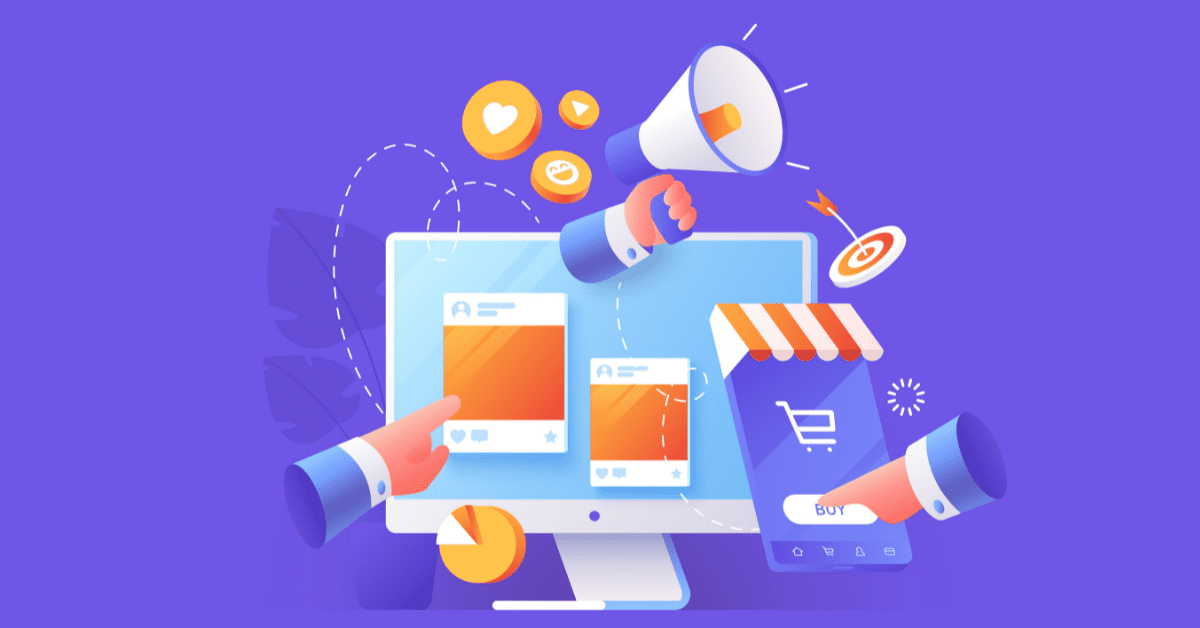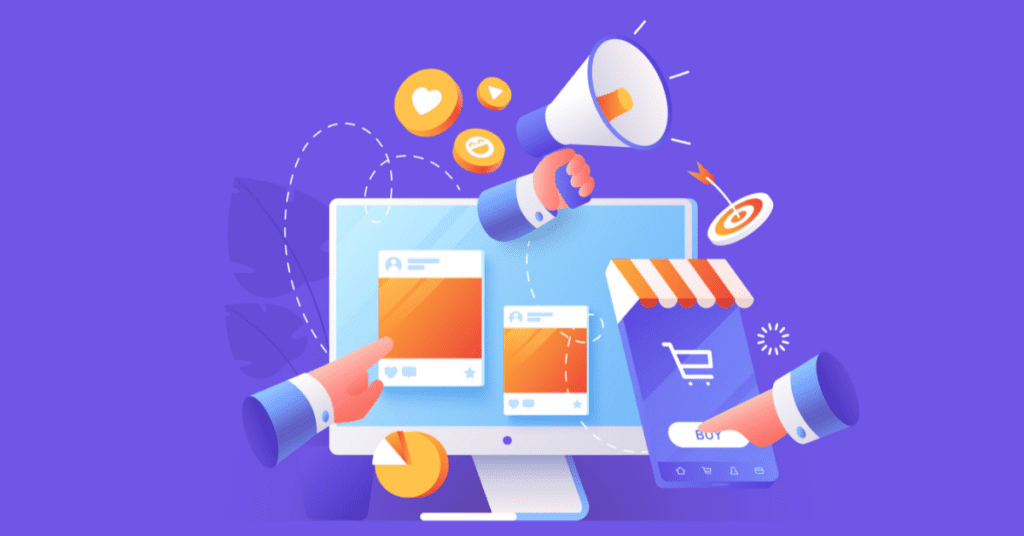How much you spend on Facebook ads is a questions that every business has. No matter how big or small your business, budgeting for Facebook ads can help you reach your target audience where and when they spend time online.
Small businesses flock to Facebook to take advantage of powerful targeting and a vast audience of users. In addition, the platform offers a range of features tailored to small business needs, allowing even those with small budgets to get into the game.
Facebook has a built-in Ads Manager that allows small businesses to purchase ads for Facebook, Instagram and Audience Network.
The best way to reach audiences when you have a limited budget is by spending smarter. This makes Facebook a perfect fit for small businesses that find other channels prohibitively expensive. Success means understanding how much your small business should spend on Facebook ads to see the results you are seeking.
How to create a budget for Facebook ads
- Decide how to allocate your Facebook budget
- Get creative with your ads
- Test your ads
- Review ad performance and adjust
Why small businesses should advertise on Facebook
Facebook advertising is big business, and your competitors are probably already using it. The platform brought in US$85 billion in revenue over the 12 months ending in December 2021. In the third quarter of 2020, it had over 10 million businesses using its advertising platform. Most significantly, Facebook ads provide the highest return on investment (ROI) of all paid advertising channels.
Here are more reasons why so many small and medium-sized businesses use Facebook to reach their customers:
Massive, connected audiences
Facebook offers small businesses the opportunity to reach customers in a space where they go to connect each day. People don’t just visit with friends and family on the platform. They also interact with companies. As a result, Facebook provides 80 per cent greater discovery for new brands or products than brand or retailer websites.
Targeting
The precise targeting offered by Facebook is a perfect fit for small businesses that need to make the most of every advertising dollar. With Facebook, you can decide who sees your Facebook or Instagram ad by customizing your ad audience within specific parameters, which are available for every campaign you run. You can target by demographics, interests, location and other characteristics. Facebook will then deliver your ads to relevant audiences when they are most likely to be seen.
Facebook also allows you to set campaign objectives to ensure your budget goes toward outcomes that align with your goals, whether that’s brand awareness, website conversions or video views.
Flexible budgets
Your Facebook budget can be whatever you can manage. A small business can spend $5, $500 or more. Of course, spending will affect the potential audience size, but it is reassuring for small businesses to know they can dip a toe in no matter what their ad budget.
As well, you’re always in control of your spending. Once you set your maximum budget, that’s all you’ll spend on a campaign.
Insights on every ad
When you advertise on Facebook, you’ll be able to review how your ad performed, how many people reacted to it and what kind of engagement it inspired. These insights can help you improve future ad campaigns by showing you what kinds of ads are most effective with your audience.
How much should a business spend on Facebook ads?
Remember that a budget is just a high-level number. Stay flexible and adjust your Facebook ad budget based on the performance of your campaigns. If your ads perform well, you may decide to move some of your marketing budget from other channels to Facebook. Budgets give you a starting point, and metrics tell you if your spending is effective.
Calculating Facebook advertising budgets for small businesses
Of course, you’ll want to get more specific when coming up with a Facebook advertising budget. A good rule is to make sure your annual marketing budget is appropriate for your revenue level. Most businesses will allocate a percentage of their revenue to marketing to ensure they continue to grow and stay competitive.
The Business Development Bank of Canada recommends that B2B companies spend two to five per cent of their revenue on marketing. In comparison, B2C companies might spend five to 10 per cent.
The more competitive your industry and the more growth you’re hoping to see, the more you’ll lean towards the higher end of the ranges.
4 steps to making the most of your Facebook ad spending
Small businesses don’t have big marketing budgets, but that doesn’t mean you can’t win big with Facebook ads. There are a few tricks to keep that will help you make the most out of every ad and fine-tune as you go:
1. Decide how to allocate your Facebook budget
Once you’ve set aside a specific amount for Facebook advertising, you’ll need to decide how you want to allocate it through the year. It’s wise to make some of these decisions in advance so that you have funds for advertising each month and extra for key seasonal campaigns.
A shop that sells ski wear would likely want to advertise lightly year round to keep awareness high, with more budget weighted in the months leading up to ski season. A florist shop might want to have a few small ad campaigns running through the year, with big promotions planned for Valentine’s Day, Mother’s Day and wedding season.
You’ll also need to decide how much of your Facebook budget to spend on audience building compared to converting that audience to customers. It’s wise to devote some money to both so you can build the audience you hope to convert over time. Ideally, you’ll find the right balance between creating an audience, offering them promotional content and retargeting them when it’s appropriate.
2. Get creative with your ads
Facebook is a great place to get creative with advertising. You can use text, images or video, and tweak anything you don’t like. When running your campaigns, you have flexibility over what you run and when, giving you the freedom to try new ideas and see what gains traction. You also can jump on an opportunity when it arises. In the time it takes for you to create a new ad, you are ready to pounce.
Not sure if your audience will appreciate serious ads or something cheekier? Facebook is an affordable platform to push these boundaries. The cost of taking a risk is low, so it’s a good place to test ideas. You may even learn something new about your audience.
3. Test your ads
The flexibility of Facebook’s advertising platform allows you to try new things and measure how they perform. Once you do that, you can test different variations of your ads and see which factors affect how your audience responds.
Often called A/B testing, or split testing, this gives small businesses a lot of power over the success of their advertising. Change just one element at a time to see what happens. You can use the results to adjust and improve future campaigns for the best outcomes.
Alternatively, you can present one ad to different audiences, each customized with a specific set of parameters – like demographics, location and interests. You can also test different budgets and audience sizes to help decide what’s best for you.
4. Review performance and adjust
With a bit of practising and testing, you’ll be able to create ads and run campaigns to see what works for your audience. Each campaign will give you metrics to compare what works with what doesn’t seem to have an impact. The more campaigns you run, the more insight you’ll gather about which ads trigger desired responses from your audience.
Even if you have a small team and limited resources, you can make Facebook advertising valuable in your marketing efforts. Smart spending of your Facebook advertising budget and careful targeting should lead you to solid returns.





